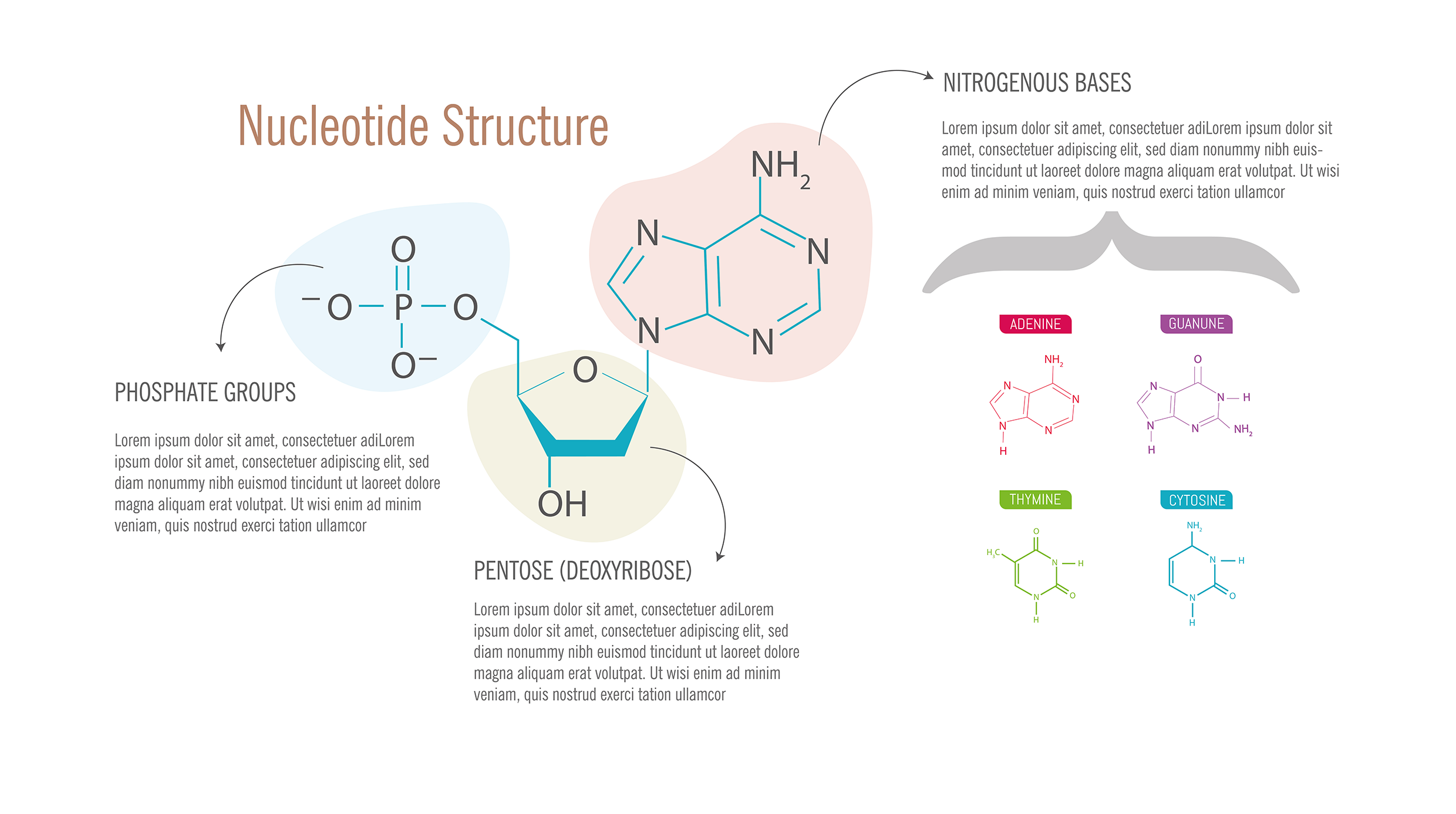Content Sections
By Rob Verkerk PhDa and Paraschiva Florescub
a ANH Founder, executive & scientific director, ANH-Intl and ANH-USA
bANH-Intl mission facilitator
As the age structure of our populations gets ever more top-heavy, with the proportion over 60 now being unprecedented in human history, it’s no surprise that the so-called ‘anti-ageing industry’ is booming. Searching the term ‘anti-ageing’ on Google reveals a breath-taking 2.7 billion hits, with a further half a billion plus showing when you lose the ‘e’ as in ‘anti-aging'. Regardless of spelling, anti-ageing has become a popular buzzword widely used by the media, health gurus, influencers, the fitness industry, not to mention cosmetic and food supplement companies. The global anti-ageing market is expected to grow from 67.2 billion USD in 2022, to an eye-watering 98.6 USD by 2028.
Every day we’re sold the latest biohacks, gadgets, powders, creams, capsules and machines that promise youthfulness and eternal beauty. While it’s easy to be drawn to the appeal of the marketing hype, it’s surprising just how few ingredients or approaches have been shown to consistently reduce biological ageing, this being something that’s quite separate from temporarily reducing the appearance of ageing of the skin, the latter being the claim of most anti-ageing cosmeceuticals.
Limiting, or even reversing, biological ageing is of course the Holy Grail for dealing with the plethora of age-related, chronic and degenerative diseases that now present the greatest burdens on health systems and detract greatly from the quality of later life.

As renowned and sometimes controversial computer scientist-turned-anti-ageing researcher, Aubrey de Grey has found during his 25-year journey in biogerontology, successes are very hard to come by, even in mice and other laboratory animals. In fact, it was only last October, while Aubrey and I (Rob) were both speakers at an anti-ageing event in the UK focusing on peptides, that Aubrey indicated that, despite the billions invested so far, the anti-ageing pipeline had revealed nothing of significance to-date. Zero.
We’d be inclined to disagree, although we do agree the evidence is still limited and is not what might be described as ‘generally accepted scientific consensus’. The stand-out successes so far, in our view, include:
- caloric restriction and intermittent fasting
- the specific peptide bioregulators developed by Prof Vladimir Khavinson and his team at the St Petersburg Institute of Bioregulation and Gerontology that were the main subject of the last-year’s UK meeting organised by Anti-Ageing Systems, and
- Nicotinamide mononucleotide (NMN), a nucleotide precursor for nicotinamide adenine dinucleotide (NAD+), the status of which, as a dietary supplement, is currently being challenged by the US Food and Drug Administration (FDA). Through our US arm, ANH-USA, we’re attempting to change the law to prevent such capture by the FDA to protect its drug industry paymasters, and we’re also considering options for bringing a lawsuit against the FDA for its action against NMN.
‘Treatments’ that claim to have anti-ageing effects abound in the marketplace. They include collagen, and diets high in polyphenols and antioxidants.
However, with NMN being the nucleotide at the forefront of many key anti-ageing protagonists’ minds, emerging science is suggesting that the anti-ageing benefits may be related to other dietary nucleotides as well, especially those directly involved in the cell cycle (read on).
This brings us squarely into territory that we at ANH-Intl have been involved with for many years, as our work helped secure the widespread availability of nucleotide food supplements in Europe. But it also means that other sources of dietary nucleotides, ranging from offal meats, seafood, fermented foods, and even bone broths, might also have important roles to play.
Let’s now take a deeper dive into the ‘what’ and ‘how’ of nucleotides before we look at the implications of a brand new piece of exciting research.
What are nucleotides?
Nucleotides are intracellular compounds that are key structural components of the ‘molecule of life’, deoxyribonucleic acid, or DNA and the closely related, much more abundant, transcription and translation nucleic acid, RNA, or ribonucleic acid. They are therefore components of every cell of the body, as well as cells of the trillions of microbes that live within us.
Chemically, nucleotides are made up of a nitrogen-containing base (thymine, cytosine, adenine, guanine or uracil), deoxyribose or ribose (a five-carbon sugar) and one to three phosphate groups. Nucleotides are involved in all functions of the body. There are two main types of nucleotides in the body: purines (double ring structure; nitrogenous bases = adenine [A] and guanine [G]) and pyrimidines (single ring structure; nitrogenous bases = cytosine [C], thymine [T, DNA only] and uracil [U, RNA only]). Both purine and pyrimidine nucleotides occur naturally in different ratios, both within the body and in foods. Nucleotides are synthesised within the body (= de novo synthesis) in limited amounts, or they are salvaged from the breakdown of DNA/RNA molecules (= ‘salvage pathway’).

They are essential for growth, development and the ongoing replacement of cells in the body, but they are not generally classified as ‘essential micronutrients’ in adults, like certain vitamin and minerals, because the amounts needed for normal cell division, immune function and metabolism can typically be derived from these de novo and salvage pathways.
However, when the body is growing rapidly as in the case of neonates and infants, or it is under physical or immunological stress, these pathways just can’t provide enough of these vital cellular building blocks to support new cell division or other critical functions. The immune system, the gut lining and the gut microbiome are among the most demanding of cellular building blocks. This deficit can only be made up through dietary consumption of nucleotides.
Accordingly, there are times in our lives when dietary intake is essential – such as during breast feeding (addition of synthetic nucleotides to early infant formula was made compulsory in most countries from the late 1980s), during illnesses, particularly those affecting the immune system, and when we are physiologically or psychologically stressed. This understanding of the essentiality of dietary nucleotides at certain times in our lives has led to them being regarded as semi-essential or conditionally essential nutrients.
But as more and more people face long-term, chronic psychological, metabolic, physiological or immunological stress, there is an argument that most people would benefit from dietary nucleotides.
So where do we find nucleotides in our diets?
Among the most prolific sources are offal meats (which were taken off many people’s menus after the BSE crisis), seafood, fermented foods (e.g. sauerkraut, kimchee, kefir, live yoghurt, fermented soy sauces), bone broths, certain mushrooms, and yeast extracts (e.g. brewer’s yeast and a wide variety of other yeast extracts including big commercial brands such as Marmite, Vegemite and Bovril). One of the features of particular dietary nucleotides, notably those containing the inosine and guanine bases, is their ability to confer that well-known, hearty umami taste that is so loved by humans around the world.
As research into the vital role of nucleotides develops, new frontiers of knowledge are encountered. Among these are the cancer protective effects of dietary nucleotides.
Recently a new frontier has been revealed: longevity.
The ‘anatomy’ of healthful longevity
Ageing is an inevitable and necessary process. Evolutionary biology informs us that humans, like all other organisms, must age and pass on to make way for future generations to allow for ongoing adaptation to changing environments. But what we don’t want is premature ageing that causes senescence in certain systems that makes us more vulnerable to ‘diseases of ageing' earlier than necessary. Sadly, that is the fact facing an increasing number on our planet today, hence the huge burdens of chronic and degenerative disease – none of which the pharmaceutical industry has answers for.
The target for many of us, then, should perhaps be graceful, healthful ageing. The kind that is synonymous with the ‘blue zone’ hotspots identified around the world in which the incidence of chronic diseases in late life is extremely low (note Dan Buettner’s debunking of claims of exaggeration).

Ageing is so much more than just wrinkles. It includes cellular senescence (gradual degradation), which is a process where our cells irreversibly stop growing and replicate. This could be due to damage to the DNA, oxidative stress or just a natural part of aging (replicative senescence) controlled by telomeres, the caps at the ends of our chromosomes that typically shorten with each cell division and control cell-span, lifespan and ageing. Let’s remember: senescence isn’t all bad – it’s also a mechanism that protects us from cancers, as it prevents the multiplication of damaged cells and cells with increasingly unstable genomes. But here’s the double-edge sword: when it comes to aging, senescence also promotes the likes of cardiovascular diseases, diabetes and a plethora of neurodegenerative diseases.
Let’s talk now a little more about telomeres. An inseparable physiological element of ageing involves the shortening of our telomeres. Telomeres, as we’ve mentioned, are the ‘caps’ at the ends of our chromosomes. Each time our cells divide, the telomeres shorten. Think of your chromosomes as shoe-laces and the telomeres as the protective caps at the ends. The ends fray and the laces shorten. Once they are too short, the cell can’t perform its normal functions and stops dividing or renewing.
Telomerase is the enzyme required to lengthen these telomeres and there are various things believed to inhibit the activity of this enzyme including chronic stress, increased oxidative stress, lack of antioxidants, omega-3s, vitamin D in the diet and lack of exercise.
Emerging literature, including the book ’The Telomere Effect’ outlines how we can control, to a certain extent, the length of our telomeres and how to prevent them from shortening unnecessarily quickly through our diets and lifestyle – what we eat, drink, how we exercise, and how we manage stress.
Now we discover there is a new player on the block that can help us with this task: nucleotides.
Nucleotides and telomeres
Emerging science is increasingly revealing the important role that nucleotides play in preventing the degradation of telomeres.
A paper published in 2019 in the Journal of Biological Chemistry, by a research group from the University of Southern California, found that there was inhibited nucleotide synthesis in senescent human mammary epithelial cells. This was clearly seen through the depletion of metabolites from nucleotide synthesis pathways. One of the conclusions of the authors was that reduced nucleotide synthesis plays a causative role in the induction of senescence. What’s more, the researchers showed that when they elevated telomerase in immortalised cells, nucleotide synthesis was maintained. Put simply, this means that when your cells begin the gradual degradation process, they stop synthesising nucleotides and equally an inadequate supply of nucleotides will kick-start that degradation process. When cells were stopped from producing nucleotides, the process of senescence would start. Conversely, if you upregulate telomerase and maintain a generous supply of nucleotides, you will prevent or reduce the rate of senescence.
Alireza Delfarah, the lead author of the study, has drawn a link between nucleotides and keeping cells young. Check out his quote below.
Senescent cells are effectively the opposite of stem cells, which have an unlimited potential for self-renewal or division. The production of nucleotides is essential to keep cells young. It also means that if we could prevent cells from losing nucleotide synthesis, they might age more slowly.- Alireza Delfarah, PhD
The stress, telomere and nucleotide connection
ANH friend, Swiss scientist and long-time nucleotide pioneer, Peter Köppel PhD, recently wrote a short piece ‘Stress and telomeres’ in which he describes the process through which glucocorticoid hormones (cortisol in particular) inhibits telomerase activity in human cells. His paper is based on the recently published pre-print by a collaborative team from the Max Planck Institute in Germany, the Universities of Vienna, Glasgow and Strasbourg, and the Western University in Canada entitled ‘Dietary nucleotides can prevent glucocorticoid-induced telomere attrition in a fast-growing wild vertebrate’. Although an animal study, it offers important, new evidence on the effects of nucleotide supplementation on telomere length.
In this study, led by Stefania Casagrande from the Max Planck Institute, developing, wild, great tits (Parus major) were given glucocorticoids to mimic exposure to stress, so triggering catabolic pathways that impair telomere maintenance. Another experimental group were given nucleotides, which are known to promote anabolic pathways including telomere maintenance, and a third experimental group was given both nucleotides and glucocorticoids. All three groups were compared with controls. The results from the glucocorticoid-treated showed the expected result: they ended up with shorter telomeres than the other three groups, including the one supplemented with both nucleotides and glucocorticoids, where the telomere length remained the same as that of the non-treated, control animals.
But here’s the key finding: the nucleotide-treated chicks outperformed all the other groups on a number of criteria. They were the only group to increase expression of a key gene that maintains telomere length (telo2), this being a proxy for the anabolic, target of the rapamycin (TOR) pathway. But they also increased their production of enzymes linked to the main energy fuel of cells, adenosine triphosphate (ATP). And if that wasn’t enough, the nucleotide-supplemented chicks uniquely upregulated two other key genes: one being terf2, which is key to telomere maintenance, and gpx4-sod1, an enzymatic antioxidant gene that protects cells from oxidative stress.
This research is a landmark study because it’s the first to look directly at the effects of nucleotide supplementation on telomere length.
This is what Peter Köppel had to say about the study:
These new findings fit well with older studies conducted in rats, which found that long-term feeding of nucleotides increased their life-span through decreasing age-related levels of lipid peroxidation, improving activity of antioxidant enzymes, again reinforcing the potential benefit of nucleotides in anti-ageing protocols.- Peter Köppel, PhD in Biochemistry & Immunology, President of PKN-AG
Is offal that awful – or might you prefer supplementation?
A meta-analysis published in 2018 in the European Journal of Nutrition investigated research on infants’ requirement for nucleotide supplementation. Infants require a lot of nutrients, minerals, nucleotides and other compounds to support their rapid growth and development. For years, nucleotides have been added to infant formulas as de novo supply is not considered enough. Supplementation in infants has shown to significantly improve growth of various factors including occipitofrontal head circumference, which is thought to be involved in cognitive function and IQ, as well as an increase in the friendly bifidobacteria in the gut microbiome. In the UK and Europe, nucleotides are a legal requirement for infant formulas.
As already discussed, nucleotides are synthesised by the body, but is that enough to meet the demands? In an increasingly toxic world where our stress levels are skyrocketing and our resilience to different stressors (such as the increasing rate of chronic disease, infections and chronic stress) is decreasing, the body might not be able to synthesise enough to meet these demands.
Dietary sources that offer particularly rich sources of nucleotides are offal meats which were widely consumed by our ancestors until very recently, in evolutionary terms, especially since the 'mad cow', BSE crisis that became headlines in 1996. Our diets have increasingly shifted away from the evolutionary diet based on foods our hunter-gatherers ancestors would catch, kill and eat from nose to tail. A stark contrast from today’s pre-packaged, clean, lean meats based on muscle tissue that tend to be low in nucleotides. Very few of us now include animal brain, stomach, liver, kidney, pancreas (and other glandular meats), and intestines in our weekly meals. Furthermore, with the increase in vegan and plant-based diets many will not get enough nucleotides from their diet as even fermented foods such as tofu, tempeh and natto contain very small amounts and are rarely staples, especially in Western diets.
This opens the door to the value of supplementation.
Choosing the right supplement
We’ve established that nucleotides synthesised through de novo or the salvage pathway are not enough in certain circumstances, such as times of stress, illness, injury, and athletic or other forms of intense physical performance. For many, these conditions are common, and may be endured for months, years or even decades.
With so many options of nucleotides on the market, how do you choose the right product? A nucleotide supplement should be readily digestible, present in high concentrations, and contain the right balance of purine and pyrimidine nucleotides. This is only possible where nucleotides have been purified, so they can be assembled in appropriate, relative concentrations. Not only that, purified nucleotides are also superior because they tend to be up to 80-90% better absorbed (Peter Köppel, personal communication) in the gut than those that are not purified.
Furthermore, our modern diets are not just generally low in nucleotides, they’re also low in pyrimidine nucleotides in particular. A good supplement will contain both pyrimidines and purines to ensure any deficiencies are addressed.
For those interested in healthful and graceful ageing, those exposed to chronic stress, those with gut issues or immunological challenges, or those who simply push their bodies hard, getting more nucleotides into your body (ideally in the order of a gram or more daily) makes a huge amount of sense. While the available research nowhere near reflects the nutritional value of nucleotides, recent findings are likely to spawn a growing body of findings. For instance, we know of one study that’s in progress that is investigating dietary nucleotides specifically as an anti-aging supplement.
But until the science catches up, and, probably more importantly, more people catch up with the existing knowledge base on the multi-system benefits of dietary nucleotides, we’ll leave you with one big question: will you go for offal meats and fermented foods – or supplements?
Find out more
- Verkerk, R. An ‘essential’ nutrient? New Food magazine, September 2020
- Verkerk, R. ‘Science births recognition of dietary nucleotides as a new nutrient group’, ANH-Intl website, November 11, 2015
- Verkerk, R. ‘Post-exercise recovery: is it more important than the exercise itself?’, ANH-Intl website, June 2017
>>> If you’re not already signed up for the ANH International weekly newsletter, sign up for free now using the SUBSCRIBE button at the top of our website – or better still – become a Pathfinder member and join the ANH-Intl tribe to enjoy benefits unique to our members.
>> Feel free to republish - just follow our Alliance for Natural Health International Re-publishing Guidelines
>>> Return to ANH International homepage










Comments
your voice counts
16 August 2023 at 9:53 pm
Although I eat a well-rounded (i.e all food groups) diet and am in very good health I would be interested in a little insurance. Do you have any suggestions as to which supplements meet your standards?
17 August 2023 at 11:32 am
Actin is root cause of aging ( https://www.nature.com/articles/s41586-022-05241-8) and many common diseases.
Your voice counts
We welcome your comments and are very interested in your point of view, but we ask that you keep them relevant to the article, that they be civil and without commercial links. All comments are moderated prior to being published. We reserve the right to edit or not publish comments that we consider abusive or offensive.
There is extra content here from a third party provider. You will be unable to see this content unless you agree to allow Content Cookies. Cookie Preferences